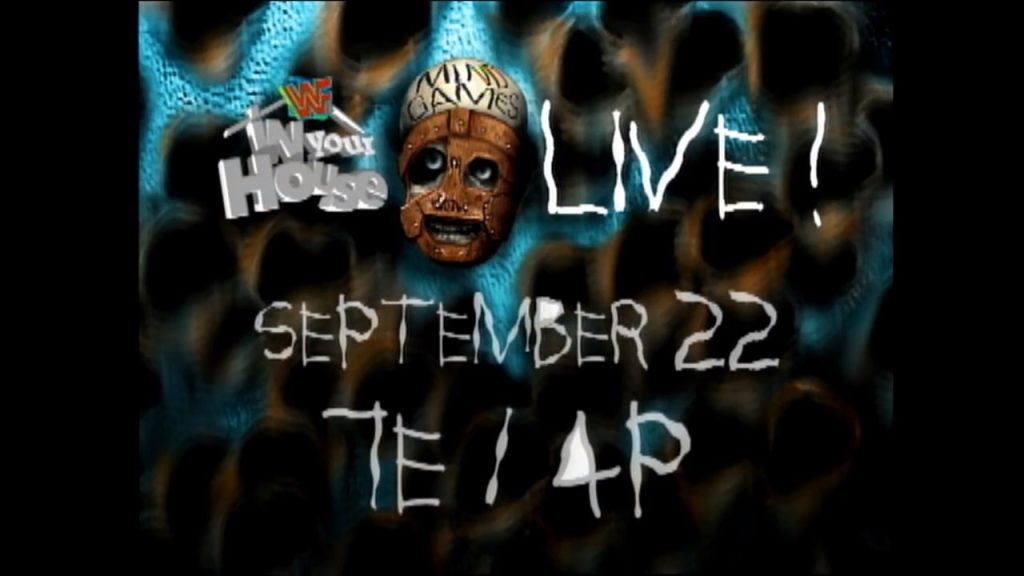WWF In Your House 6: Rage In The Cage – A Retrospective Review

In Your House 6: Rage in the Cage – A Time Capsule of the ’90s Wrestling Boom
“In Your House 6: Rage in the Cage” – even the name invokes the nostalgic overtones of the 1990s wrestling scene. Nestled right in the midst of the New Generation Era, this Pay-Per-View (PPV) offering was emblematic of a time when the World Wrestling Federation (WWF) was in a transitional phase, gradually setting the stage for the oncoming Attitude Era. Let’s jump into the squared circle and re-examine this classic event.
The Lead-Up
To truly appreciate the atmosphere of In Your House 6, one must understand its context. WWF was knee-deep in competition with WCW. The mid-90s saw talents jumping ship, unexpected returns, and the gritty realism of storylines beginning to replace the cartoonish gimmicks of yesteryears.

The Crybaby Match: Razor Ramon vs. The 1-2-3 Kid
Kicking off with a Crybaby Match, this bout was more of a comedic spectacle than a wrestling showcase. However, it did serve a purpose. Razor Ramon (Scott Hall) and The 1-2-3 Kid (X-Pac/Sean Waltman) had a storied history by this point, with Kid’s upset win over Razor in 1993 being the stuff of legends. This match, replete with baby bottles and diapers, showcased both performers’ ability to balance in-ring prowess with entertainment. While not a technical masterpiece, it was certainly memorable, and a testament to the playful spirit of mid-90s WWF.

Hunter Hearst Helmsley vs. Duke “The Dumpster” Droese
An early showcase of the man who would later be known as Triple H, this match was an interesting look at the evolution of a performer. While the blue-blooded snob gimmick would eventually be shed, the foundations of Helmsley’s ring work were evident here. Duke, on the other hand, was one of the last vestiges of the era of occupational gimmicks. The match was solid, if not spectacular, and served as a sign of changing times in the company.

Yokozuna vs. The British Bulldog
This match was a contrast of styles. Yokozuna, the mammoth sumo-styled behemoth, against the powerhouse dynamo, The British Bulldog. What’s fascinating is the behind-the-scenes dynamics. Yokozuna, a former WWF Champion, was on the decline in his career due to health and weight issues. Bulldog, meanwhile, was in line for a significant push. The match was more about telling a story than athletic display, but both men did their part commendably.

Number One Contenders Match: Shawn Michaels vs. Owen Hart
Easily the highlight of the night, this bout was a masterclass. The storyline was intriguing: if Michaels lost, he would not get his WrestleMania title shot. Owen, always the consummate performer, played his part to perfection. Behind the scenes, Michaels was being groomed for the top spot, and this match was an essential stepping stone in his ascendancy. The in-ring chemistry was palpable, with both men showcasing why they are often touted among the best of their generation.

Bret “The Hitman” Hart vs. Diesel – WWF Title Match – Steel Cage Main Event
The culmination of the night saw Bret Hart defend his WWF Championship against Diesel inside the unforgiving steel cage. This bout was emblematic of the era’s tension: Bret, the technician, representing the old guard, against Diesel (Kevin Nash), the embodiment of the ‘larger than life’ superstars Vince McMahon so dearly loved.
Behind the curtains, the dynamics were just as compelling. Nash was on his way to WCW, a move that would send shockwaves through the industry and intensify the brewing Monday Night Wars. This match, hence, was a fitting send-off, a passing of the torch, and an affirmation of Bret as the company’s workhorse.
Behind-the-Scenes Ripples
Beyond the matches, the PPV was indicative of the backstage politics and shifting sands. Vince McMahon’s vision for his company was evolving, and that reflected in the product. The old guard was gradually making way for the new, and the seeds of the Attitude Era were being sown.
Additionally, the looming presence of WCW meant that WWF had to be on its toes. The talent they were showcasing, the storylines they were developing, and even the production values – all were influenced by the competition. In Your House 6 was very much a product of its time, a snapshot of a company in flux.
Retrospective Gaze
Revisiting “In Your House 6: Rage in the Cage”, one gets a sense of nostalgia, yes, but also a profound appreciation for the transitional period it represents. This was WWF finding its footing, experimenting, taking risks, and laying the groundwork for what would become one of the most iconic periods in professional wrestling.
The event stands as a testament to the talent of its performers, the vision of its creators, and the passion of its fans. It’s a reminder of the magic that can happen when storytelling, athleticism, and entertainment converge in the squared circle. Whether you’re a die-hard fan from the ’90s or a new enthusiast, “In Your House 6” is a chapter of wrestling history worth revisiting.




